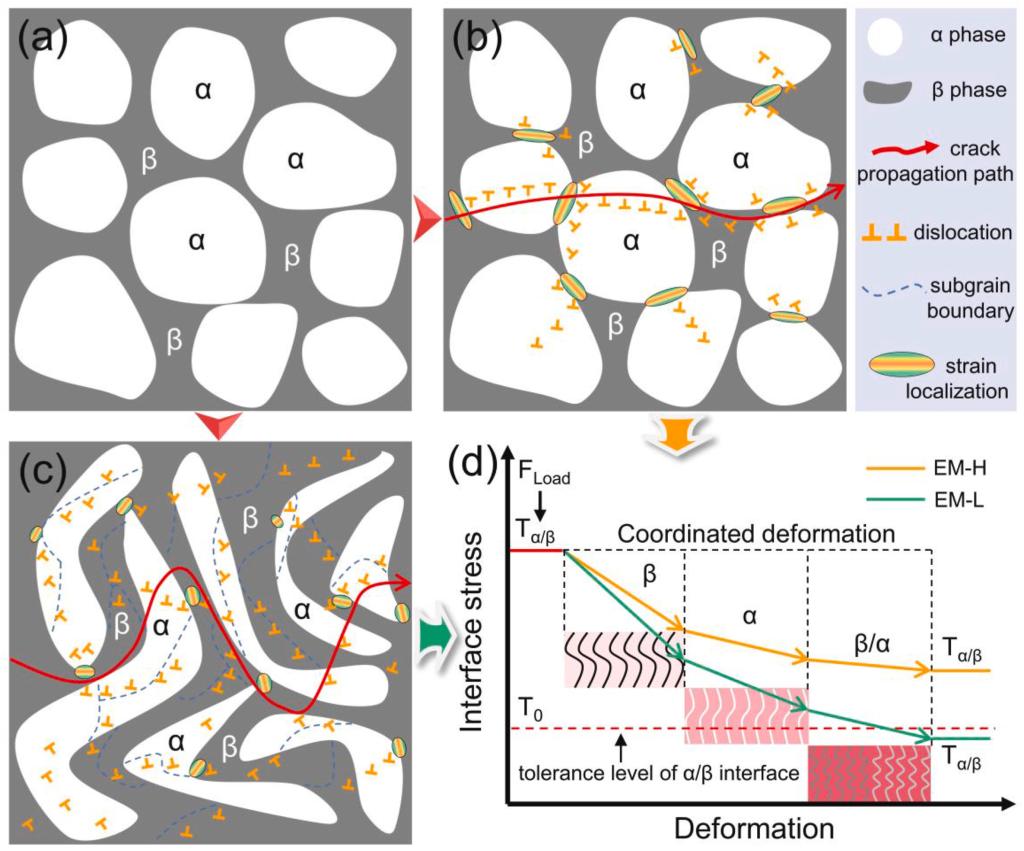Mechanism of oxygen content on impact toughness of α + β powder metallurgy titanium alloy
Shuai Gao, Kejia Pan, Dongxu Chen, Bao Wang, Shixing Wu, Xuan Luo, Minghan Sun*, Chao Zhao, Ning Li*
https://www.sciencedirect.com/science/article/pii/S2238785424020830
Abstract
Understanding the mechanism of oxygen on toughness of titanium alloys is crucial for popularizing powder metallurgy. In this work, the effect of oxygen content (1500, 3000 and 5000 ppm) on the impact toughness of powder metallurgically modified titanium alloys with fine equiaxed microstructures (∼1.5 μm) was systematically investigated. With increasing oxygen content, the c/a value of the α-phase lattice parameter increases to a maximum of 1.593 Å, and the hardness increases from 4.03 GPa to 5.05 GPa, resulting in an increase in strength of ∼150 MPa and a considerable decrease in the ability of the two phases to coordinate. The crack initiation energy is similar for different oxygen contents, whereas the crack propagation energy increases considerably with decreasing oxygen content; the impact energy of stable crack extension increases from 4 J to 13 J and 35 J, and the impact energy of unstable crack extension and crack collapse stages increases from zero to 14 J and 25 J, respectively, indicating that decreasing oxygen content can substantially improve the crack extension resistance. The activation of numerous dislocations within the two phases and the formation of subgranular boundaries at low oxygen contents promote the release of internal stresses in the grains, and simultaneously, the interfacial resistance to dislocation migration and the concentration of interfacial stresses are also reduced, which improves the coordination of the two-phase plastic deformation of the equiaxed microstructures; the crack extension paths in the impact process become more tortuous and finally achieve impact energies as high as 85–100 J.


